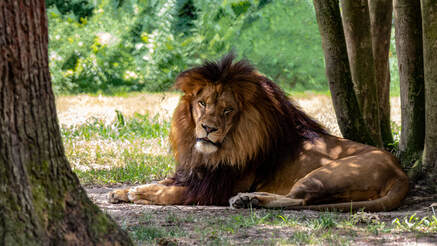 You’ll find that a Telephoto or Long Focal length lens is your friend at the zoo. Usually, you won’t find that the animals are moving quickly—like in a safari setting (after all, they’re enclosed). So, you don’t need the fancy/expensive equipment you’d need for the safari, but a long focal length with a wide aperture will help at the zoo. This combination allows for a shallow depth of field. Shallow depth of field will blur backgrounds and make netting and fences (enclosures) seem to disappear behind the animals—as well as allow you shoot right through the front of them! If the animal is far enough away from the front fencing, it will appear invisible in the picture. It’s a combination of the long focal length and wide aperture that affect the depth of field. Basically, the wider the aperture and longer the focal length the shallower the depth of field—the less fencing, netting, etc… you’d see. You may need to adjust your focus manually though, as your camera may try to focus on the fence instead of the animal behind it. Once you focus on the animal, though, the fence will disappear. I hope this tip helps you the next time you go to the zoo! While we’re all on this journey towards learning, I’d like to encourage you to pick up your camera, keep yourself and your gear safe and have a wonderful time!
0 Comments
Leave a Reply. |
What Is This Page?Since I love photography and teaching, I thought I would start a Blog page and share how I take my images, what I was thinking and about me. Categories
All
Archives
March 2022
Ready to Order
|

 RSS Feed
RSS Feed